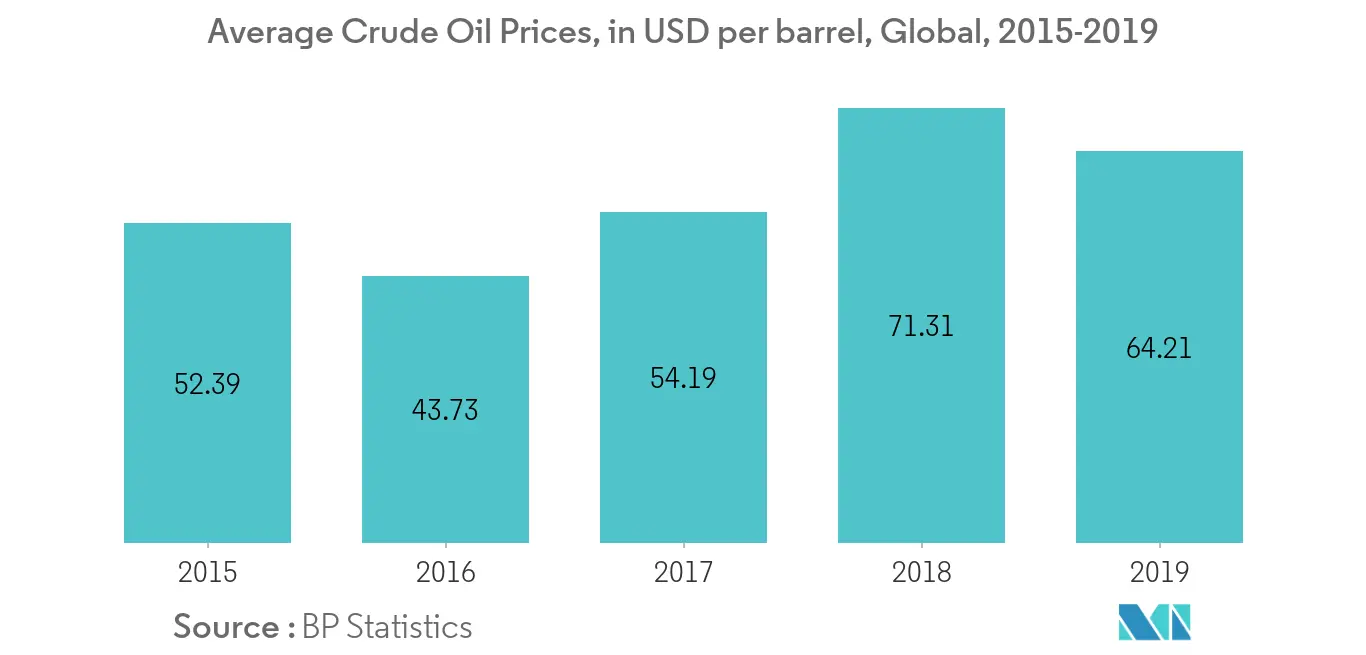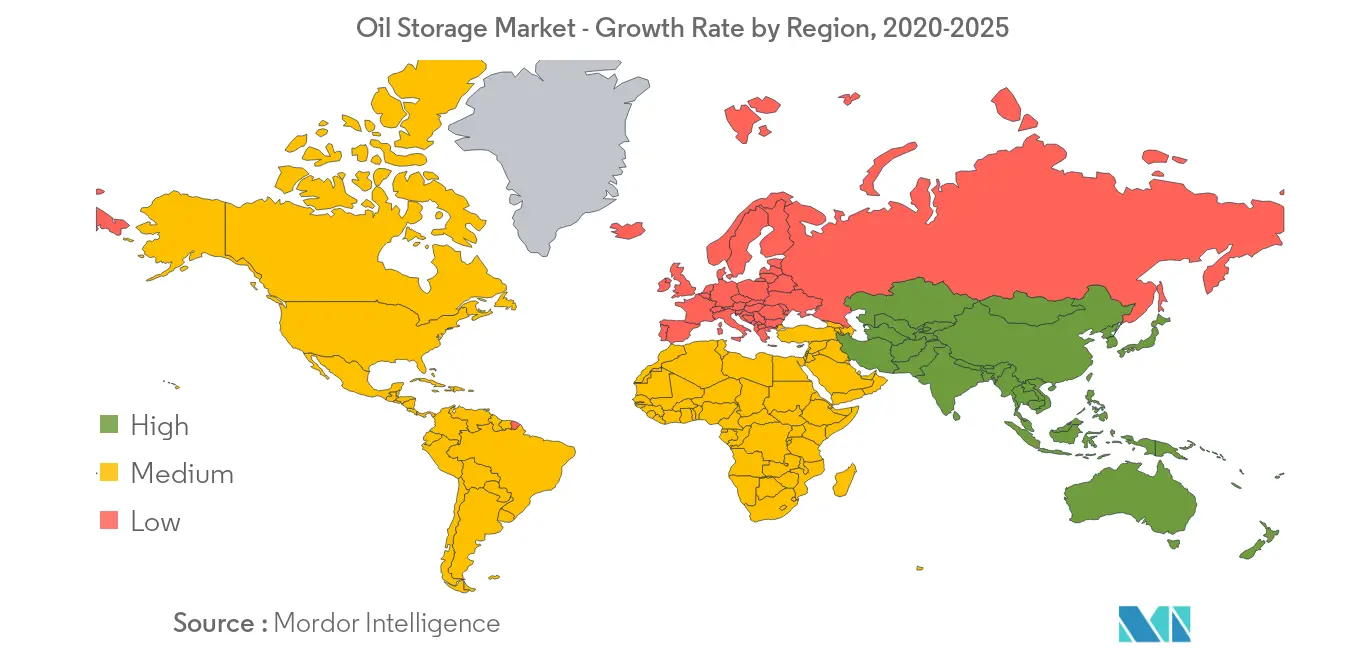Market Trends of Oil Storage Industry
This section covers the major market trends shaping the Oil Storage Market according to our research experts:
Low Crude Oil Prices to Drive the Market Demand
- Decreasing crude oil prices is expected to drive the market because as the price of the oil is reduced, then the demand for oil storage is expected to increase i.e. consumer stores oil in larger volumes only when the prices are low.
- Globally, the crude oil price in 2019 was 64.21 USD per barrel. A decline of 11% has been observed when compared to 2018 (71.31 USD per barrel).
- Production costs influence prices, along with storage capacity; although less impactful, the direction of interest rates can also influence the price of commodities.
- As of Sep 2019, about 50% of storage capacity is being used in Cushing, Okla. However, slowing production and pipeline network improvements are expected to reduce the chance that oil storage reaches its limits, further helping the investors shed their fears of too much supply and a rise in oil prices.
- Therefore, based on the above-mentioned factors, low crude oil prices are expected to drive the market demand during the forecast period.

North America to Dominate the Market
- In 2019, North America has an oil consumption (includes light distillates, middle distillates, fuel oil, and others) of 23536 thousand barrels per day (kb/d) i.e. a decline of 0.7% when compared to 2018 (23692 kb/d).
- Similarly, the oil consumption for the United States can be given as 19400 kb/d as of 2019. A decline of 0.1% has been observed when compared to 2018 (19428 kb/d). The United States is expected to dominate the market in the North America region, owing to capacity additions and CAPEX on new build oil storage projects, followed by Canada.
- Growing crude production in Canada has resulted in the complete utilization of storage and pipeline capacities. New oil storage terminals have been planned in the country to cater to the demand of the domestic oil producers.
- The largest oil storage terminals of North America are Freeport V (United States), West Hackberry (United States), and Big Hill (United States). Also, the largest crude storage fields in the United States were Cushing, Oklahoma (82 million barrels), Louisiana Offshore Oil Port (67 million barrels), Houston, Texas (36 million barrels), etc. As the number of storage terminals or oil fields were increasing, the demand for oil storage market is expected to increase in North America during the forecast period.
- United States crude storage facilities are falling rapidly, albeit from a low starting level, and tank space is likely to be a problem if the global oil market remains heavily oversupplied. With global lockdowns already sharply reducing demand for oil, a lack of storage would weigh further on already depressed prices, leaving producers with few financial or physical alternatives but to turn off the taps.
- Therefore, based on the above-mentioned factors, North America is expected to dominate the oil storage market during the forecast period.


